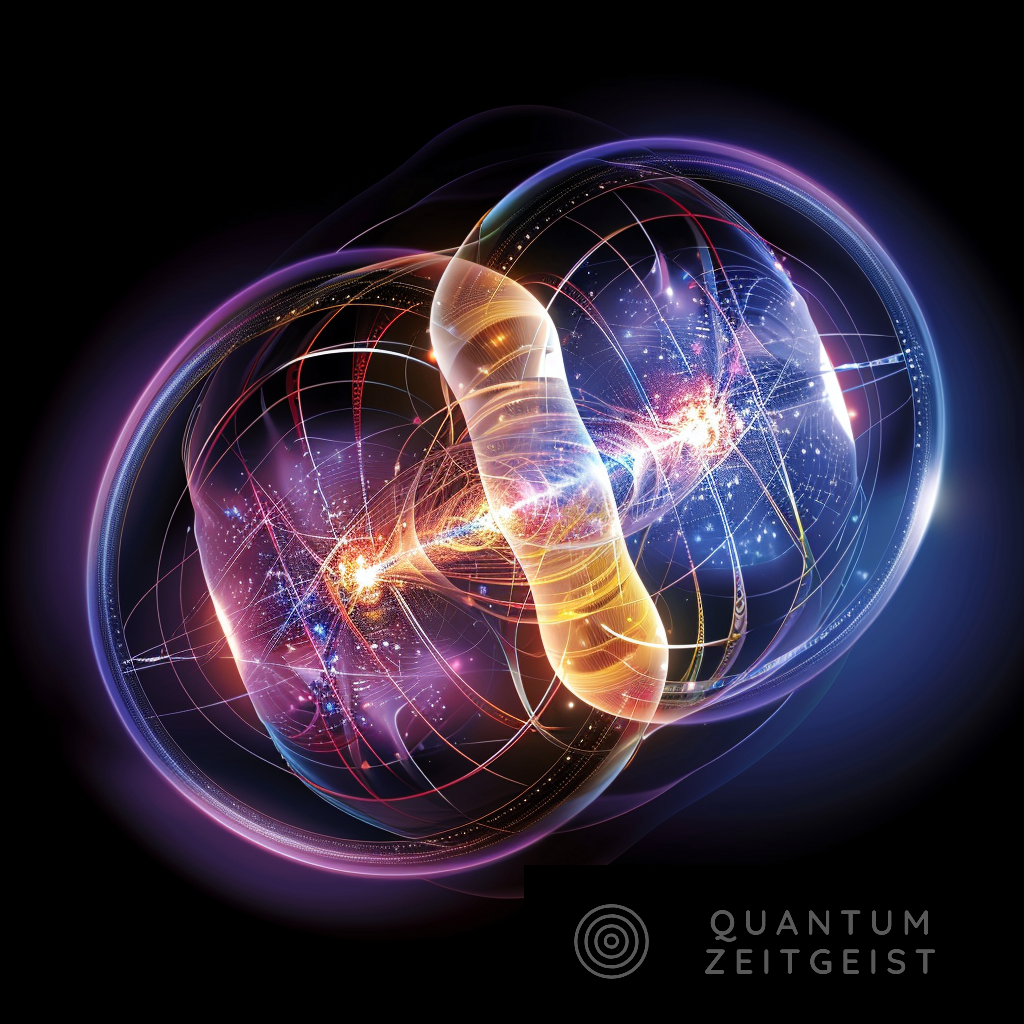Researchers from the Pritzker School of Molecular Engineering at The University of Chicago and the Institut Quantique and Département de Physique at Université de Sherbrooke have discovered that an entanglement phase transition (EPT) can occur without stochasticity or measurements. Using the bosonic Kitaev chain (BKC) model, the team found that the BKC undergoes a phase transition from a nonreciprocal to a reciprocal phase. This is the first instance of an EPT in a non-disordered bosonic system under purely unitary dynamics, which could have significant implications for understanding entanglement dynamics in many-body quantum systems.
Can Entanglement Phase Transition Occur Without Stochasticity or Measurements?
A team of researchers from the Pritzker School of Molecular Engineering at The University of Chicago and the Institut Quantique and Département de Physique at Université de Sherbrooke have been studying the dynamics of entanglement in many-body quantum systems. Their research, published in PRX Quantum, focuses on the bosonic Kitaev chain (BKC) model, which displays key hallmarks of non-Hermitian physics, including nonreciprocal transport and the non-Hermitian skin effect.
The team’s research has been centered on understanding entanglement dynamics in many-body quantum systems with nonunitary evolution. They have found that for chaotic systems, measurements can trigger a novel phase transition from an entangled phase to a disentangled phase, a phenomenon dubbed a measurement-induced phase transition (MiPT). While these models provide fertile ground for the development of rich theoretical ideas at the intersection of statistical physics and quantum information, direct experimental observation of MiPTs can be extremely challenging.
What is the Connection Between Non-Hermitian Dynamics and Measurement Dynamics?
The researchers have found that non-Hermitian dynamics are naturally interpreted as arising from measurement dynamics where one postselects on a specific set of null measurement outcomes. Of particular interest are studies of entanglement phase transitions (EPTs) in non-Hermitian models exhibiting nonreciprocity. For example, directional systems where hopping to the right is much stronger than to the left.
The team has studied an EPT in such a system, two coupled fermionic Hatano-Nelson chains, from volume-law to area-law entanglement scaling. They have found that the transition coincides with the transition between a reciprocal and a nonreciprocal phase. The latter could be directly witnessed by the non-Hermitian skin effect (NHSE), a phenomenon occurring in the nonreciprocal phase where all modes localize under open boundary conditions.
Can Entanglement Phase Transition Occur Without Stochasticity or Measurements?
Inspired by these previous studies, the researchers asked whether an EPT can occur without any stochasticity and without any need for measurements or postselection. They considered a translationally invariant model that exhibits a transition between reciprocal and nonreciprocal phases, with the latter exhibiting the NHSE. Unlike previous work, their model has a fully Hermitian Hamiltonian and unitary evolution, and there is no need for any kind of measurement, postselection, or dissipation.
The researchers found that the answer to this question is surprisingly yes. Their main result is to present the first instance of an EPT in a nondisordered bosonic system under purely unitary dynamics. They stress that this EPT requires no postselection whatsoever. Furthermore, as this model contains neither randomness nor measurements, one can unambiguously attribute this EPT to reciprocity breaking.
What is the Role of the Bosonic Kitaev Chain Model in this Research?
The model of interest in this research is a variant of the bosonic Kitaev chain (BKC) model. By tuning a Hamiltonian parameter g, the BKC undergoes a phase transition from a phase where the dynamics of the q and p quadratures are nonreciprocal to a phase where they are reciprocal. At long times after a quench, the reciprocal phase is characterized by a volume law for the entanglement entropy (EE) of a subsystem of size l, i.e., it scales linearly with l. On the other hand, the nonreciprocal phase has even stronger entanglement growth.
What is the Significance of this Research?
This research is significant as it presents the first instance of an EPT in a nondisordered bosonic system under purely unitary dynamics. The researchers have found that the BKC model undergoes a phase transition from a phase where the dynamics of the q and p quadratures are nonreciprocal to a phase where they are reciprocal. This discovery could have profound implications for the understanding of entanglement dynamics in many-body quantum systems.
Publication details: “Entanglement Phase Transition Due to Reciprocity Breaking without Measurement or Postselection”
Publication Date: 2024-01-31
Authors: Gideon Lee, Tony Jin, Yu-Xin Wang (王语馨), Alexander McDonald, et al.
Source: PRX Quantum 5, 010313
DOI: https://doi.org/10.1103/PRXQuantum.5.010313

